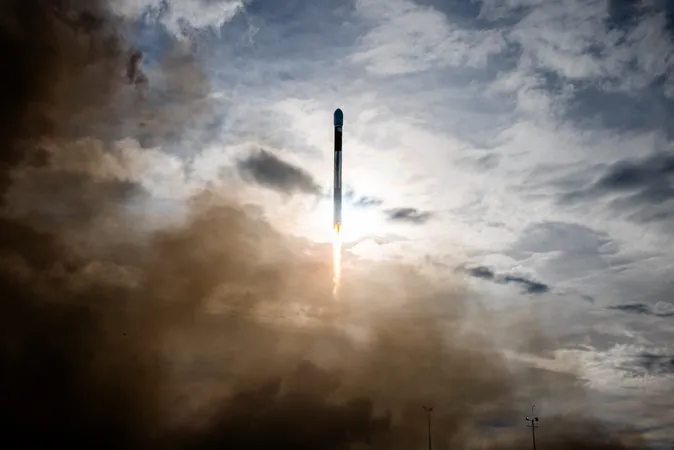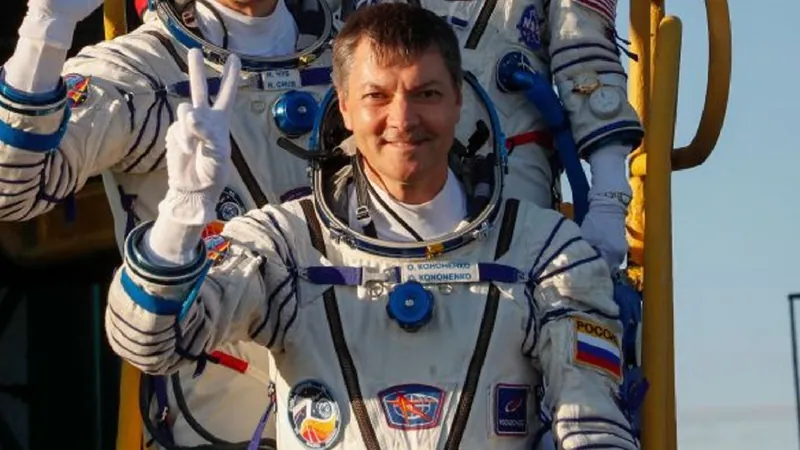
Firefly Aerospace Secures Major Contract to Launch NOAA's QuickSounder: What This Means for Weather Forecasting!
2024-09-24
In a landmark move for environmental monitoring, Firefly Aerospace has clinched a pivotal contract to launch the QuickSounder satellite, a cutting-edge prototype set to enhance the capabilities of the National Oceanic and Atmospheric Administration (NOAA).
This exciting development marks a significant step forward in NOAA's ambition to revolutionize weather data collection as part of the agency's next generation of environmental satellites orbiting Earth.
While the exact financial value of this contract remains under wraps, the implications of this partnership are immense. The contract was awarded via NASA’s Venture-Class Acquisition of Dedicated and Rideshare (VADR) launch services framework, which caters specifically to facilitating satellite launches with fixed pricing.
QuickSounder: Enhancing Weather Data Collection
QuickSounder is not just another satellite; it's the flagship component of NOAA's innovative Near Earth Orbit Network (NEON). This next-gen, polar-orbiting satellite is designed to collect critical weather data, supporting a multitude of organizations—including the National Weather Service—in their forecasting efforts.
Advanced Technology and Collaboration
An exciting facet of this mission is that the QuickSounder is being constructed by the Southwest Research Institute, integrating an Advanced Technology Microwave Sounder. This engineering marvel has been refurbished by Northrop Grumman, ensuring top-tier performance standards that will aid in climate and disaster management efforts.
Looking Ahead: Launch and Implications
Set to launch no earlier than February 2026, QuickSounder is poised to play a key role in NOAA’s strategy to expedite the deployment of small to medium-sized satellites. This initiative aims to provide timely and actionable data critical for weather predictions, disaster response, and ongoing climate monitoring.
Collaboration between NOAA and NASA
With NOAA and NASA collaborating on this ambitious venture, the groundwork is being laid for a future where real-time weather data is even more accessible. NASA will oversee the development and launch phases, while NOAA will handle the funding and direct operational requirements post-launch.
VADR Contract Details
The VADR contract has a maximum total value of $300 million across all awarded launches and boasts a flexible, indefinite delivery model lasting five years.
Conclusion: A Transformative Step in Atmospheric Monitoring
As the world grapples with the challenges of climate change and unpredictable weather patterns, the advancements heralded by QuickSounder could transform our understanding and response to environmental shifts.
Stay tuned for more updates on this groundbreaking project that promises to reshape our atmospheric monitoring capabilities!


 Brasil (PT)
Brasil (PT)
 Canada (EN)
Canada (EN)
 Chile (ES)
Chile (ES)
 España (ES)
España (ES)
 France (FR)
France (FR)
 Hong Kong (EN)
Hong Kong (EN)
 Italia (IT)
Italia (IT)
 日本 (JA)
日本 (JA)
 Magyarország (HU)
Magyarország (HU)
 Norge (NO)
Norge (NO)
 Polska (PL)
Polska (PL)
 Schweiz (DE)
Schweiz (DE)
 Singapore (EN)
Singapore (EN)
 Sverige (SV)
Sverige (SV)
 Suomi (FI)
Suomi (FI)
 Türkiye (TR)
Türkiye (TR)